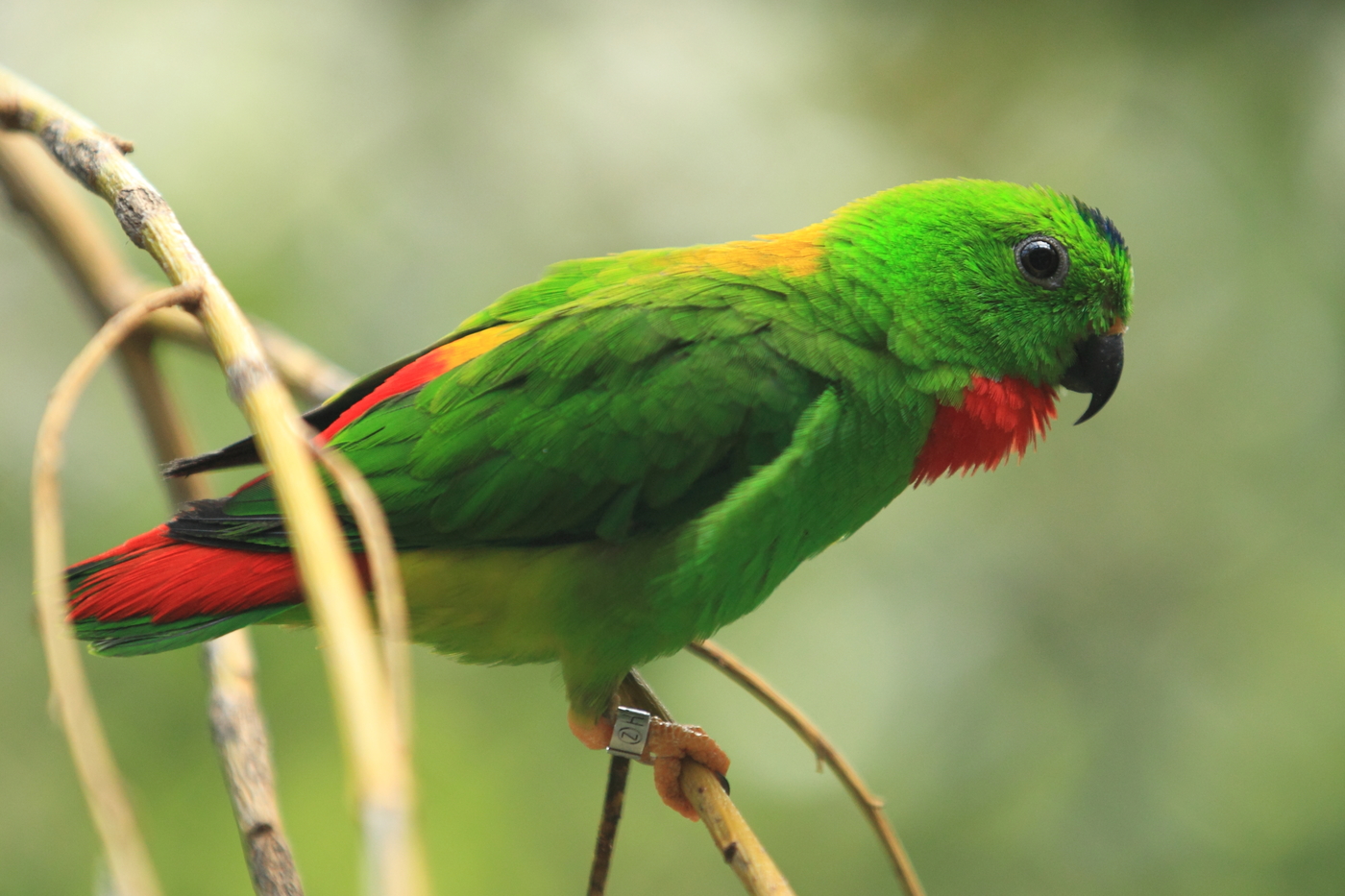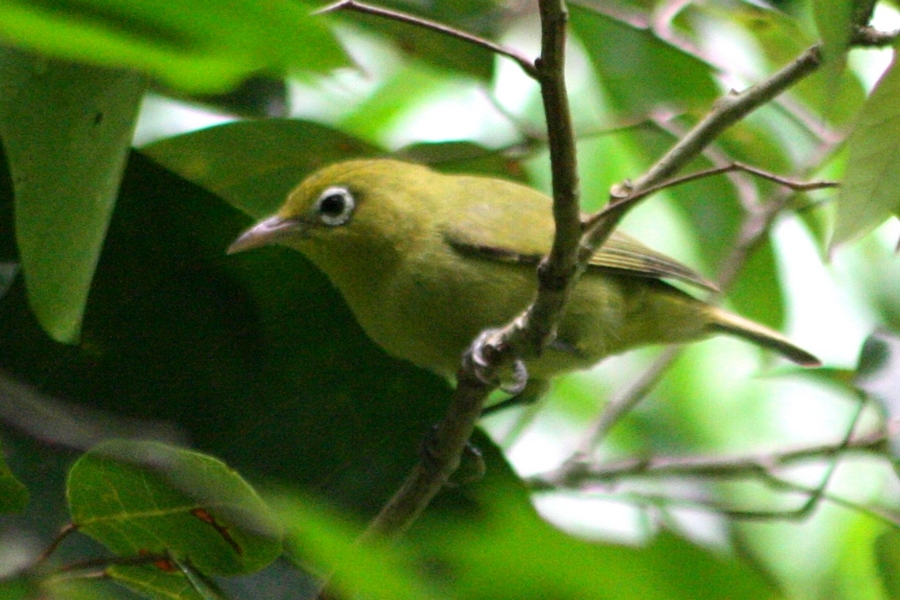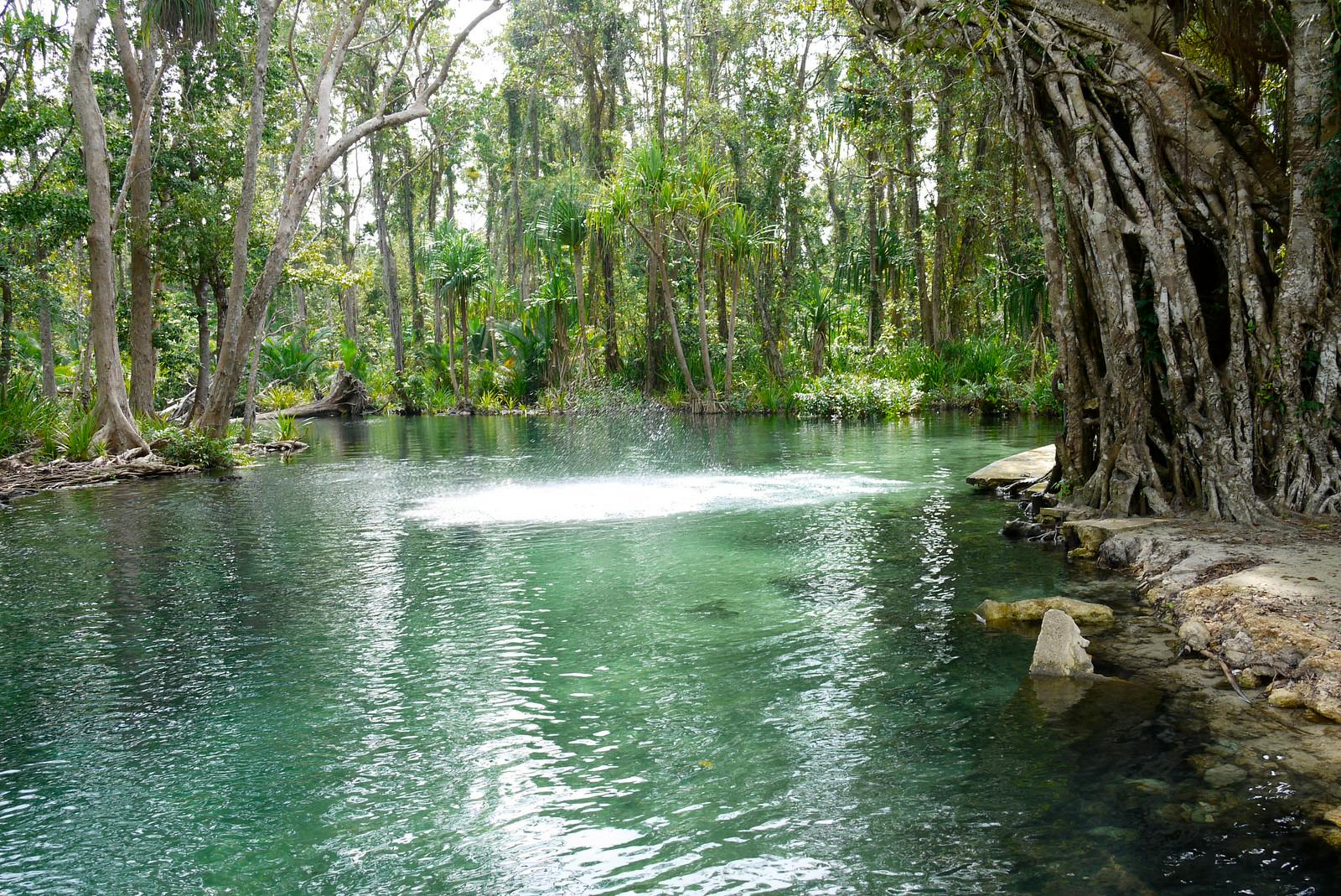New Britain-New Ireland Montane Rainforests
The ecoregion’s land area is provided in units of 1,000 hectares. The conservation target is the Global Safety Net (GSN1) area for the given ecoregion. The protection level indicates the percentage of the GSN goal that is currently protected on a scale of 0-10. N/A means data is not available at this time.
Bioregion: New Guinea & Surrounding Islands (AU13)
Realm: Australasia
Ecoregion Size (1000 ha):
1,216
Ecoregion ID:
145
Conservation Target:
99%
Protection Level:
0
States: Papua New Guinea
Mossy cloud forests covered in epiphytes top the high mountains of New Britain and New Ireland. Here, unique honeyeaters, white-eyes, and thicket birds forage rain or shine. Only the two biggest islands of the Bismarck Archipelago have montane forests that start at about 1,000 meters. The montane forests are largely intact as they shroud steep rainy mountains unsuitable for plantations. The mountain ranges of New Britain are the Whiteman, Nakanai, Baining, and Willaumez ranges, while New Ireland has the Hans Meyer, Verron, and Lelet ranges.

The flagship species of the New Britain-New Ireland Montane Rainforests ecoregion is the Bismarck hanging parrot. Image credit: Dreamstime, Lukas Blazek (License)
The boundary for the ecoregion at 1,000 meters marks a point of transition where the height of the forest diminishes, tree leaves become smaller and thicker, and tree crowns become smaller. Temperatures in the montane forest decrease with altitude, and humidity generally increases. Trees characteristic of lower montane forests include Araucaria, Lithocarpus, Castanopsis, Syzygium, and Ilex. The southern beech (Nothofagus) and oak trees are found on mainland New Guinea and New Britain but are absent from New Ireland.
The highest forests of New Ireland are dominated by Metrosideros salomonensis (Myrtaceae). The Lelet Plateau, southern Namatanai, Hans Meyer Range of New Ireland and Willaumez Peninsula, Whiteman Range, Nakanai Mountain, and Mts. Sinewit and Burringa of New Britain have all been identified as areas of botanical importance. Epiphytes appear to be a particularly rich guild of plants with a high level of endemism.
The fauna is notable for many species of pigeons, bats, white-eye birds, frogs, and murid rodents, all groups that have diversified on these isolated mountains on these remote islands. Forty-five mammals occur here, thirty-six of these are bats, and most of the remainder are murid rodents. The New Guinea pademelon was introduced long ago by indigenous people, as were the dwarf cassowary and cuscus. Thirty bird species are largely restricted to the montane forests of the archipelago, including the New Ireland friarbird and Bismarck honeyeater.

Louisiade white-eye. Image credit: Wikipedia, Remi Bigonneau (CC by 4.0)
The intact status of these forests can be attributed, in part, to the steep slopes and smaller trees that help make these forests less attractive to plantations and logging. However, some logging operations are active above 1,000 meters, leading to degraded forests and the influx of invasive species like rats, feral pigs, feral dogs, and feral cats that prey on native wildlife. Formally protected areas are not present.
Priority conservation actions for the next decade
- Protect, through community-based management or active protection, a number of key biodiversity areas that are representative of the archipelago’s diverse isolated ranges from logging, roads, and agriculture, including Hans Meyer, Nakanai, Baining, Whiteman, Lelet Plateau, Klampun Wildlife Management Area, southern Namatanai, and the Willaumez Peninsula.
- Monitor and control the spread and impact of non-native invasive species on natural habitats and fauna of the montane forests.
- Gazette or uplist existing conservation sites to formally protected areas and establish a robust protected area network.
-
-
- Adams VM, VI Tulloch, HP Possingham. 2017. Land-sea conservation assessment for Papua New Guinea. A report on the work undertaken to fulfill the terms of the Project Review and Integration of the Terrestrial and Marine Program of Works on Protected Areas. PNG CEPA, University of Queensland, Global Environment Facility, UNDP, Brisbane. 75 pp.
- Beehler BM, TK Pratt. 2016. Birds of New Guinea Distribution, Taxonomy, and Systematics. Princeton University Press, Princeton.
- CEPF. 2012. Ecosystem Profile: East Melanesian Islands Biodiversity Hotspot. Critical Ecosystem Partnership Fund, Washington DC.
-
Cite this page: New Britain-New Ireland Montane Rainforests. Ecoregion Snapshots: Descriptive Abstracts of the Terrestrial Ecoregions of the World, 2021. Developed by One Earth and RESOLVE. https://www.oneearth.org/ecoregions/new-britain-new-ireland-montane-rainforests/
-



